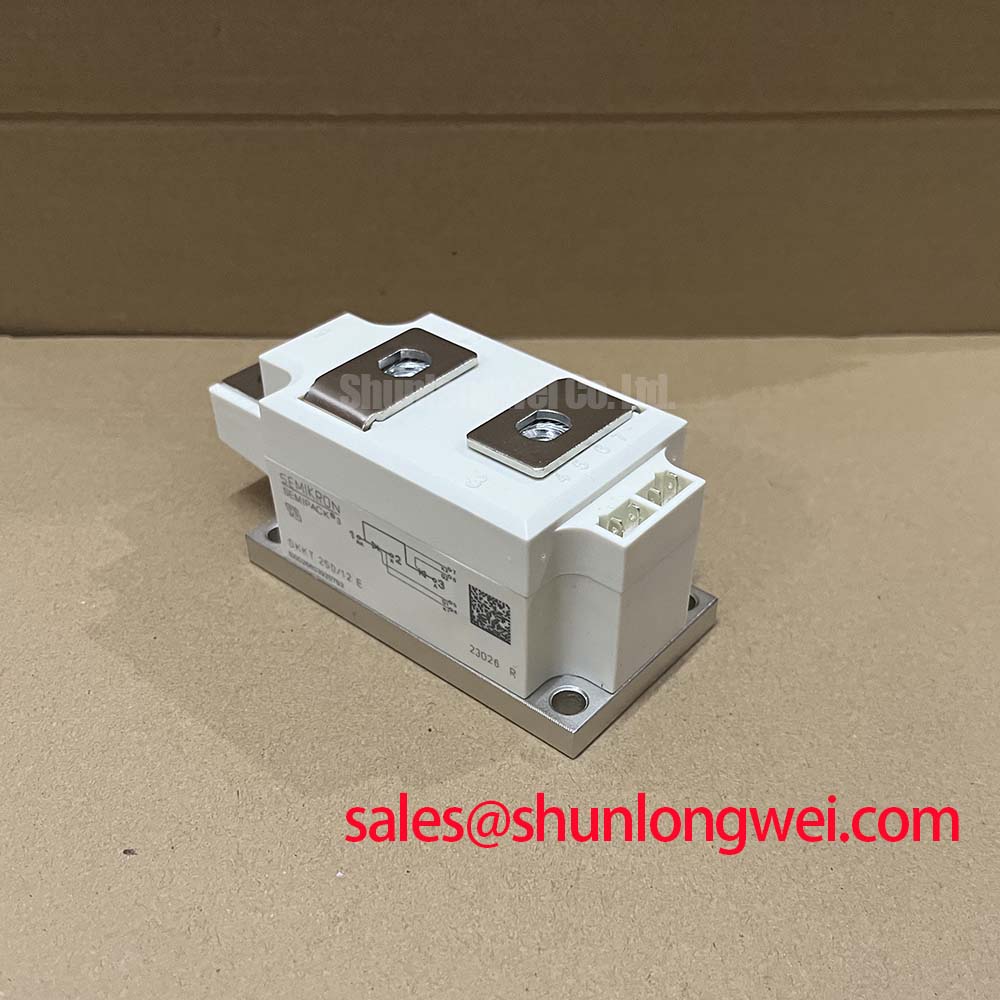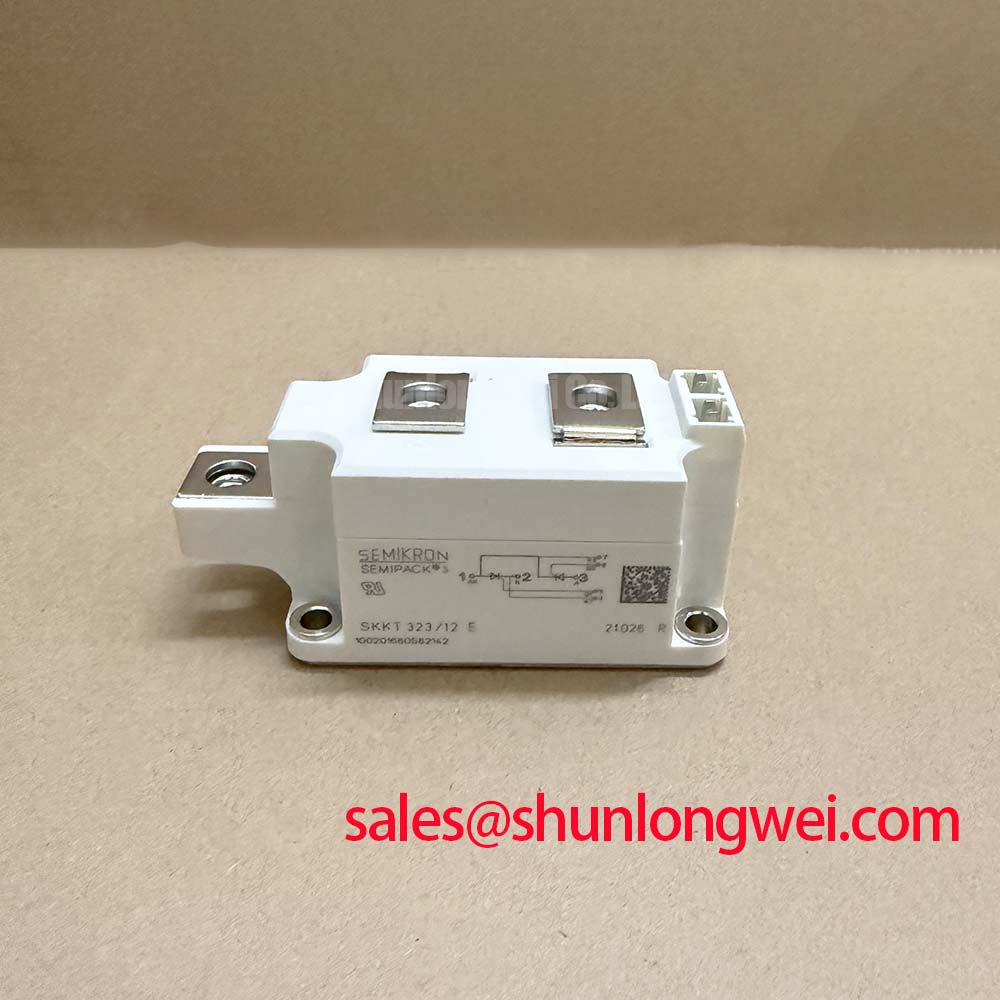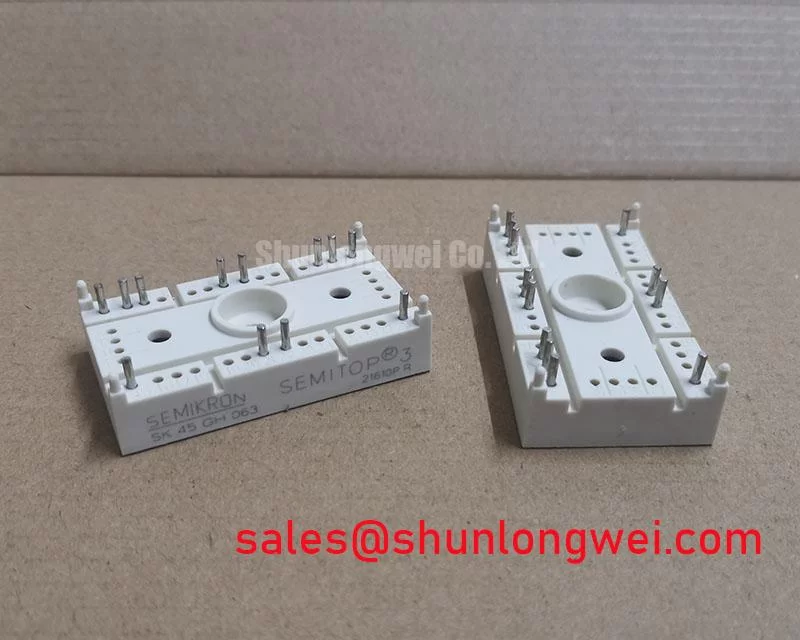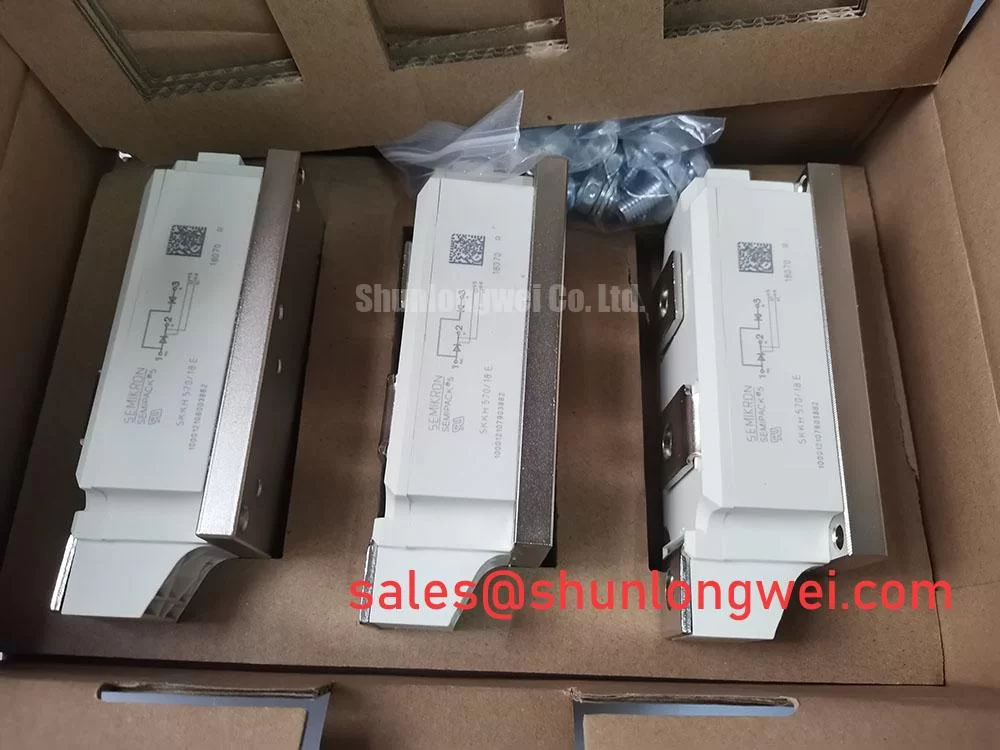SKKT250/12E Thyristor Module: Engineering High-Reliability Power Control
Content last revised on October 24, 2025.
Engineering Insights for the SKKT250/12E Thyristor Module
A Robust Foundation for High-Current Industrial Power Conversion
The Semikron SKKT250/12E is a high-reliability thyristor module engineered for demanding industrial power control applications. It delivers exceptional operational longevity and thermal stability through its robust, solder-free pressure-contact design. Key specifications include a 1200V repetitive peak reverse voltage, a 250A average on-state current, and a heat transfer mechanism utilizing an aluminium nitride ceramic isolated baseplate. This construction ensures both high electrical isolation and superior thermal cycling capability. For systems managing high-current inductive loads where long-term reliability is non-negotiable, the SKKT250/12E provides a durable and efficient control element. This module is the optimal choice for 400V and 480V line applications that prioritize operational lifespan and thermal margin under strenuous cyclic loads.
Key Parameter Overview
Decoding the Specs for Enhanced Thermal Reliability
The specifications of the SKKT250/12E are tailored for robust performance in industrial environments. The parameters below highlight the module's capacity for high-current handling and its resilience to thermal and electrical stress.
| Parameter | Value | Engineering Significance |
|---|---|---|
| Repetitive Peak Reverse/Off-State Voltage (VRRM, VDRM) | 1200V | Provides a substantial safety margin for direct operation on 400V/480V AC industrial mains, protecting against transient voltage spikes. |
| Average On-State Current (ITAV) | 250A (at Tcase = 85°C) | Enables precise control of high-power loads such as large industrial motors and heating elements without derating. |
| Surge On-State Current (ITSM) | Consult Datasheet | A high surge current rating is critical for surviving the significant inrush currents typical of motor starting or transformer energization. |
| Gate Trigger Current (IGT) | max. 200mA | The amplifying gate design ensures reliable and sensitive turn-on with standard gate drive circuitry, simplifying the control interface. |
| Construction | Precious Metal Pressure Contacts | This key feature eliminates solder fatigue, a primary failure mode in power modules, resulting in superior power cycling capability and extended operational life. |
Download the SKKT250/12E datasheet for detailed specifications and performance curves.
Application Scenarios & Value
Achieving System-Level Benefits in Industrial Motor Control
The SKKT250/12E is engineered for deployment in high-stress power conversion systems where uptime and reliability are paramount. Its primary applications include AC motor soft starters, DC motor controls, and temperature regulation for industrial processes. What is the primary benefit of its pressure-contact design? Enhanced long-term reliability by eliminating solder fatigue.
Consider a high-inertia industrial conveyor system driven by a three-phase AC motor. A direct-on-line start would cause a severe voltage dip and impose massive mechanical shock. By integrating the SKKT250/12E into a Soft Starter circuit, engineers can precisely manage the motor's starting voltage ramp. The module's robust 250A current rating effortlessly handles the sustained startup current, while its high surge capability absorbs the initial inrush. The module's low thermal resistance, facilitated by the AlN ceramic baseplate, ensures efficient heat dissipation during this critical phase, preventing overheating and extending the life of both the motor and the controller. This level of control not only reduces electrical and mechanical stress but also improves overall system efficiency and longevity. While this module is ideal for 480V systems, for applications on 690V lines, the related SKKT250/16E offers an increased voltage rating of 1600V.
Technical Deep Dive
A Closer Look at Pressure-Contact Design for Long-Term Reliability
The defining feature of the SKKT250/12E is its use of precious metal pressure contacts instead of conventional solder joints. This design choice directly addresses one of the most common failure mechanisms in power modules: thermal fatigue. During operation, power modules heat up and cool down. The different materials inside expand and contract at different rates, putting immense stress on rigid solder layers. Over thousands of cycles, this can lead to micro-cracks and eventual failure.
The pressure-contact system works like a highly engineered, spring-loaded assembly. It maintains a consistent, high-force connection between the silicon die and the electrical terminals, regardless of temperature fluctuations. Think of it as the difference between a glued connection and a high-tensile bolted joint in a bridge; the bolted joint is designed to accommodate dynamic stress and maintain integrity over a much longer lifespan. This intrinsic robustness makes the SKKT250/12E exceptionally well-suited for applications involving frequent start/stop cycles or fluctuating loads, such as in crane drives, welding power supplies, and industrial heating controls.
Industry Insights & Strategic Advantage
Meeting the Demand for Durability in 24/7 Operations
In the context of Industry 4.0 and increasing automation, the reliability of individual components has a magnified impact on plant-level productivity. Unscheduled downtime in a production line or critical process can lead to significant financial losses. The SKKT250/12E, with its focus on mechanical and thermal durability, represents a strategic component choice for achieving a lower Total Cost of Ownership (TCO).
By engineering out the solder-fatigue failure mode, the module provides a "fit-and-forget" solution that aligns with the industry's demand for maintenance-free and highly dependable systems. This design philosophy, validated by its UL recognition (file no. E 63 532), ensures that equipment built with the SKKT250/12E can meet stringent operational targets and safety standards, making it a cornerstone for building resilient power infrastructure.
Frequently Asked Questions (FAQ)
How does the pressure-contact design of the SKKT250/12E improve system reliability compared to soldered modules?
The pressure-contact system eliminates solder layers, which are prone to cracking and delamination after repeated temperature cycles. This makes the module exceptionally resistant to thermal fatigue, leading to a significantly longer operational lifespan and higher reliability in applications with frequent power cycling, such as motor soft starters or industrial heating controls.
What is the primary role of the aluminium nitride (AlN) ceramic baseplate?
The AlN ceramic baseplate serves two critical functions: it provides high-voltage electrical isolation between the power circuit and the mounting heatsink, and it offers excellent thermal conductivity. This ensures both operational safety and efficient transfer of waste heat away from the thyristor junctions, allowing the module to operate at its full 250A rating.
Is the SKKT250/12E suitable for building a three-phase controlled rectifier?
Yes, absolutely. The dual-thyristor topology of the SKKT250/12E makes it an ideal building block for AC Phase Control and controlled rectifiers. Three of these modules can be configured to create a fully controllable six-pulse bridge rectifier, enabling precise DC voltage and power output for applications like DC motor drives and battery charging systems.
What does the "12E" in the part number SKKT250/12E signify?
In Semikron's nomenclature for this series, the "12" typically indicates the repetitive peak off-state voltage rating (VDRM / VRRM) in hundreds of volts, so "12" corresponds to 1200V. The "E" suffix often denotes a specific generation or feature set, such as compliance with certain environmental standards or a particular gate sensitivity. Always refer to the official datasheet for precise definitions.
Strategic Outlook for Power System Design
Opting for the SKKT250/12E thyristor module is a strategic decision that prioritizes long-term operational integrity over initial component cost. Its pressure-contact technology provides a tangible engineering advantage in applications where thermal cycling is a dominant stress factor. For designers of industrial power systems, this translates directly into a more robust, reliable, and ultimately more profitable end product by minimizing field failures and downtime. For more information on power module technologies, visit the Semikron corporate page.
















